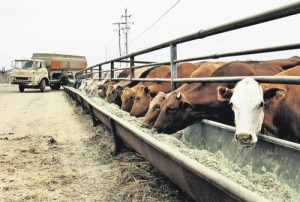The use and overuse of antibiotics have, according to The Economist, led to bacteria evolving resistance to many medications. Dealing with multi drug-resistant strains of Staphylococcus aureus (which causes MRSA infections) and Escherichia coli (linked to food poisoning) requires complex and costly care. The emergence of totally drug-resistant tuberculosis threatens a return to a time before antibiotics, when many life-threatening conditions were largely untreatable.
 Nanotechnology could be one way of avoiding, or at least postponing, such a nightmare. Many nanoparticles, which are substances smaller than 100 nanometres (billionths of a metre) have antimicrobial properties, disrupting bacteria and either preventing them from spreading or killing them outright. Silver nanoparticles, in particular, interfere with bacterial replication and the tiniest specks physically abrade and disrupt membrane walls. The most powerful nano-attacks, however, appear to involve reactive oxygen species (ROS). These chemically active molecules are the shock troops of the biological world, rampaging through DNA, oxidising enzymes and damaging many of the cells and proteins essential for life.
Nanotechnology could be one way of avoiding, or at least postponing, such a nightmare. Many nanoparticles, which are substances smaller than 100 nanometres (billionths of a metre) have antimicrobial properties, disrupting bacteria and either preventing them from spreading or killing them outright. Silver nanoparticles, in particular, interfere with bacterial replication and the tiniest specks physically abrade and disrupt membrane walls. The most powerful nano-attacks, however, appear to involve reactive oxygen species (ROS). These chemically active molecules are the shock troops of the biological world, rampaging through DNA, oxidising enzymes and damaging many of the cells and proteins essential for life.
The problem is that the mechanisms that allow nanoparticles to kill bacteria pose a risk to the very people they are intended to protect. Inhaled nanoparticles of metal oxides or silver can persist in the lungs and migrate to the kidneys, liver and brain with toxic effects. And ROS have been linked to genetic damage, heart problems and Alzheimer’s disease.
Now Philip Demokritou and Georgios Pyrgiotakis at the Centre for Nanotechnology and Nanotoxicology at the Harvard School of Public Health have come up with a way of creating safer nanoparticles, literally from thin air, using a process called electrospraying. A cooling element chills a tiny needle to condense a minuscule drop of water vapour from the atmosphere. Applying a high voltage to the needle then explodes the drop into a spray of droplets, each just 25 nanometres in size, containing water and ROS.
